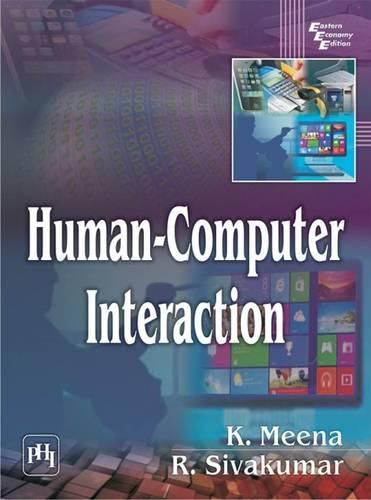Readings Newsletter
Become a Readings Member to make your shopping experience even easier.
Sign in or sign up for free!
You’re not far away from qualifying for FREE standard shipping within Australia
You’ve qualified for FREE standard shipping within Australia
The cart is loading…






Human-Computer Interaction (HCI) is the current challenging issue of research and information technology. Areas of recent research such as usability engineering, cognitive architectures, spoken dialogue systems and recommender systems are covered. New dimensions of HCI, such as ontological engineering, ambient intelligence and ubiquitous computing are also introduced, as are design methodologies of spoken dialogue systems and the corresponding mathematic models.
The book is an invaluable tool for undergraduate and postgraduate students of computer science and engineering, and information technology. In addition, it will be of value to postgraduate students of computer applications.
Researchers will benefit from chapter 3 (Modelling of Understanding Process) and chapter 5 (Recommender Systems) as these are based on the review of cognitive architectures and ontological tools. Software engineers will find the book useful especially for the contents of chapter 2 (Usability Engineering). Technology innovators will appreciate chapter 7 (Ambient Intelligence-The New Dimension of Human-Computer Interaction), which discusses advanced technologies, such as Ambient Intelligence, Middleware Technologies and Ubiquitous Computing. Information specialists and web designers will have an interesting experience with chapter 6 (Advanced Visualisation Methods) that deals with advanced visualisation techniques.
$9.00 standard shipping within Australia
FREE standard shipping within Australia for orders over $100.00
Express & International shipping calculated at checkout
Human-Computer Interaction (HCI) is the current challenging issue of research and information technology. Areas of recent research such as usability engineering, cognitive architectures, spoken dialogue systems and recommender systems are covered. New dimensions of HCI, such as ontological engineering, ambient intelligence and ubiquitous computing are also introduced, as are design methodologies of spoken dialogue systems and the corresponding mathematic models.
The book is an invaluable tool for undergraduate and postgraduate students of computer science and engineering, and information technology. In addition, it will be of value to postgraduate students of computer applications.
Researchers will benefit from chapter 3 (Modelling of Understanding Process) and chapter 5 (Recommender Systems) as these are based on the review of cognitive architectures and ontological tools. Software engineers will find the book useful especially for the contents of chapter 2 (Usability Engineering). Technology innovators will appreciate chapter 7 (Ambient Intelligence-The New Dimension of Human-Computer Interaction), which discusses advanced technologies, such as Ambient Intelligence, Middleware Technologies and Ubiquitous Computing. Information specialists and web designers will have an interesting experience with chapter 6 (Advanced Visualisation Methods) that deals with advanced visualisation techniques.